This article was last updated on April 16, 2022
Canada: ![]() Oye! Times readers Get FREE $30 to spend on Amazon, Walmart…
Oye! Times readers Get FREE $30 to spend on Amazon, Walmart…
USA: ![]() Oye! Times readers Get FREE $30 to spend on Amazon, Walmart…
Oye! Times readers Get FREE $30 to spend on Amazon, Walmart…
With Saudi Arabia in the thick of the current unrest in the Middle East, it is interesting to see how much weaponry the United States is selling to one of the globe's greatest disregarder of human rights. Fortunately for all of us, the Defense Security Cooperation Agency (DSCA), an agency of the United States Department of Defense that provides both technical and financial assistance, training to U.S. allies and transfer of defense materiel to other nations, gives us a monthly summary of transactions that have taken place.
Here is a listing of the transactions between the Pentagon and the Government of Saudi Arabia for 2015:
Here are some details about some of the transactions:
1.) November 16, 2015: Here is a listing of the materiel:
This purchase was designated to replenish the Royal Saudi Air Force's current weapons supply which have been depleted "due to the high operational tempo in multiple counter-terrorism operations". This sale will "help sustain strong military-to-military relations between the United States and Saudi Arabia, improve operational interoperability with the United States, and enable Saudi Arabia to meet regional threats and safeguard the world's largest oil reserves." The principal contractor will be determined by competition.
2.) October 20, 2015: Here is a listing of the materiel:
This sale was designated to help the Government of Saudi Arabia modernize its navy. The principal contractor for this transaction is Lockheed Martin Corporation.
3.) October 14, 2015: Here is a listing of the materiel:
The Royal Saudi Land Forces Aviation Command plans to use these helicopters for search and rescue, disaster relief, humanitarian support, counterterrorism and combat operations. The Pentagon notes that the proposed sale will not alter the military balance in the region. The principal contractors are Sikorsky Aircraft Company of Stratford, Connecticut and General Electric Aircraft Company.
4.) July 29, 2015: Here is a listing of the materiel:
Again, the sale was intended to resupply the Royal Saudi Land Forces supply of ammunition that has been depleted due to attacks against Houthi militia and Al-Qaeda in the Arabian Peninsula. The principal contractor for the GPADS will be Airborne Systems North America in Pennsauken, New Jersey. The remaining items will be procured from a combination of existing Army ammunition stocks and new procurement from unknown principal contractors.
5.) July 29, 2015: Here is a listing of the materiel:
The proposed sale will modernize and replenish Saudi Arabia's current Patriot missile stockpile which has become obsolete. The sale will promote stability in the region. The principal contractors are Lockheed Martin Missiles and Fire Control and Raytheon Corporation.
6.) May 20, 2015: Here is a listing of the materiel:
In the words of the DSCA:
"This proposed sale will contribute to the foreign policy and national security of the United States by helping to improve the security of a strategic regional partner, which has been, and continues to be, an important force for political stability and economic progress in the Middle East…Saudi Arabia will use the enhanced capability as a deterrent to regional threats and to strengthen its homeland defense."
The principal contractors are Sikorsky Aircraft Corporation and Lockheed Martin Corporation.
In case you weren't adding the numbers up, the total value of materiel transferred to Saudi Arabia from the United States in 2015 was $20.835 billion.
It is interesting to note that, in many of the press releases from the Defense Security Cooperation Agency, the Pentagon makes it quite clear that the proposed sale of the military equipment "will not alter the basic military balance in the region". One has to wonder if the equipment is being sold to Saudi Arabia to protect the current Saudi royal family and their iron grip on the nation. With the Saudis exporting 19 percent of their oil to the Americas, any political instability in the nation could cause significant grief to the economies of the United States, Japan, China and South Korea, the other beneficiaries of Saudi oil. as you can see on this pie chart:
In closing and as I am prone to do, let's take a look at how muchthe defense industry puts into Washington starting with the contributions that the sector has made in 2015 – 2016:
Here's how much the defense sector has spent on lobbying every year since 1998:
And we wonder why we are selling tens of billions of dollars worth of materiel to a nation that has a long history of disregarding human rights and a strong connection to al-Qaeda.
Click HERE to read more of Glen Asher's columns.
You can publish this article on your website as long as you provide a link back to this page.


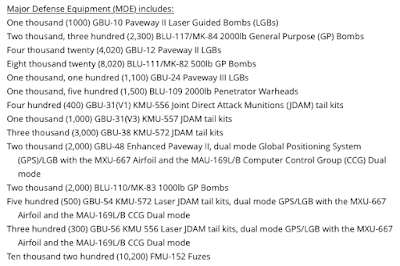
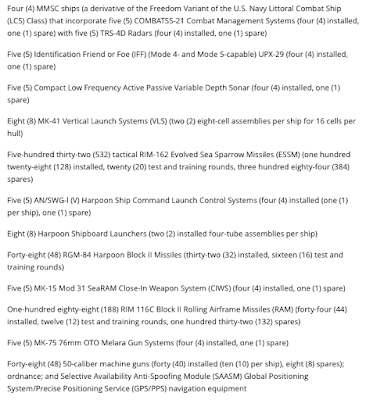

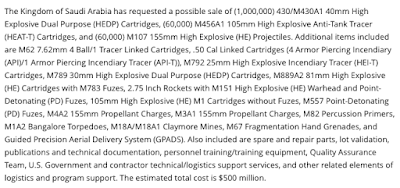

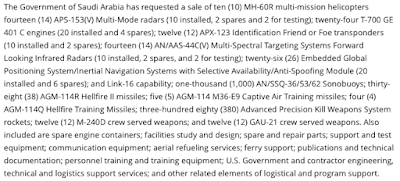
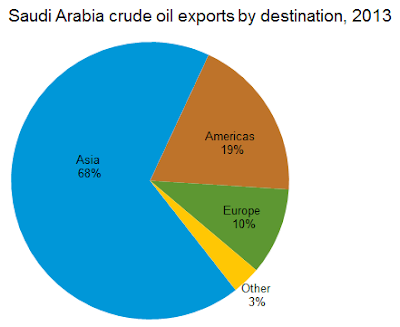

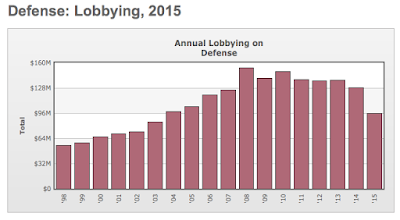
Be the first to comment